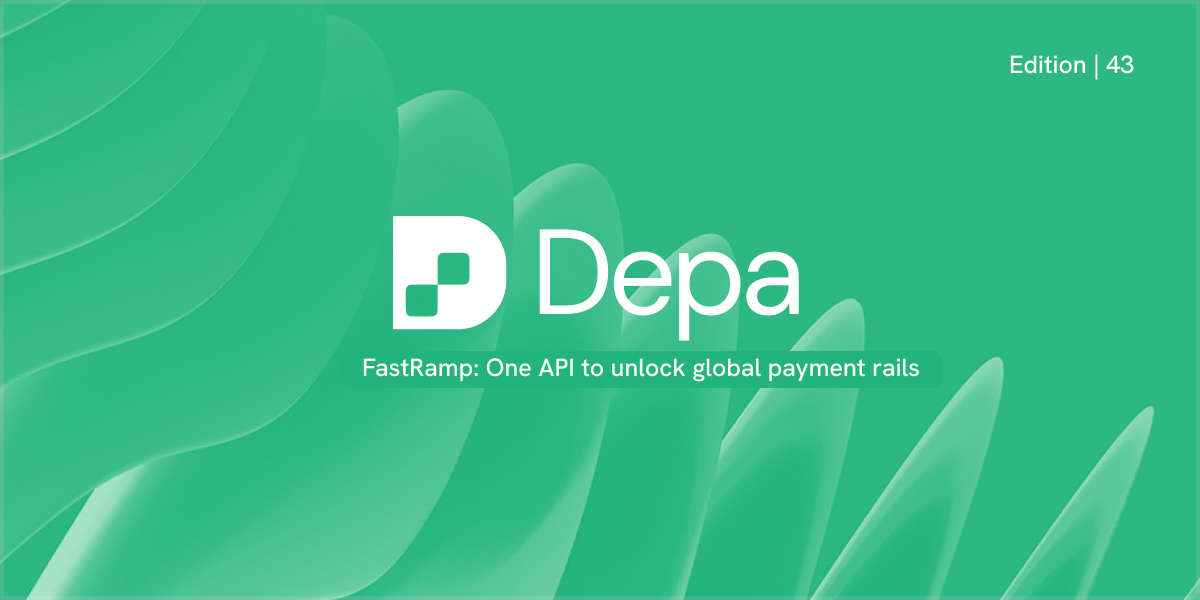
Hi Depa Digest readers! 🚀 This week we’re breaking down how a single, production-ready API can replace the spaghetti of payment integrations your teams wrestle with. Read on to see the FastRamp architecture and discover how Depa On/Off ramp solution can help your project :)
Integrating fiat rails, card acquiring and crypto rails across regions can take months and multiple vendors. FastRamp consolidates those pieces under a single, production-grade API so product and payments teams ship faster, reduce vendor overhead, and keep compliance centralized. This article explains the architecture, key business outcomes, and a step-by-step integration path.
Payments architecture is fragmented: different vendors for card acquiring, local wires (SEPA, ACH), SWIFT, and crypto on/off-ramps. That means multiple integrations, duplicated compliance flows and long time-to-market. A single API reduces engineering effort and centralizes operational controls — so your product team focuses on the user experience, not connectivity.
Via our White-label Widget for On/Off ramp, you can allow your users to On ramp money via card acquiring, Bank transfers and also blockchain payments.
FastRamp centralizes rails around three layers:
A unified API also enables modular expansion: add new rails or markets without a full rebuild.
Track these KPIs within 30 days of pilot:
Use the pilot to capture baseline and actual delta — that’s the story that converts procurement.
Platforms building a single, integrated payment stack report measurable improvements in onboarding and settlement velocity.
If your teams are juggling multiple payment integrations, FastRamp’s “one API” model reduces complexity and speeds execution — letting product and finance teams focus on growth.
Book a technical demo HERE to see how Depa can help you out :)
And now that you have got here, thank you for reading this week’s edition of Depa Digest! We really appreciate your time and commitment to staying informed on the latest news in our ecosystem. If you have any insights regarding this topic, feel free to share it with us in the comments!
This article was written by Javier Perez, Corporate Growth & Partnerships at Depa.
If you’d like to learn more about how Depa is helping to shape the future of digital asset infrastructure, visit our website at depa.finance. See you in the next edition! 🚀